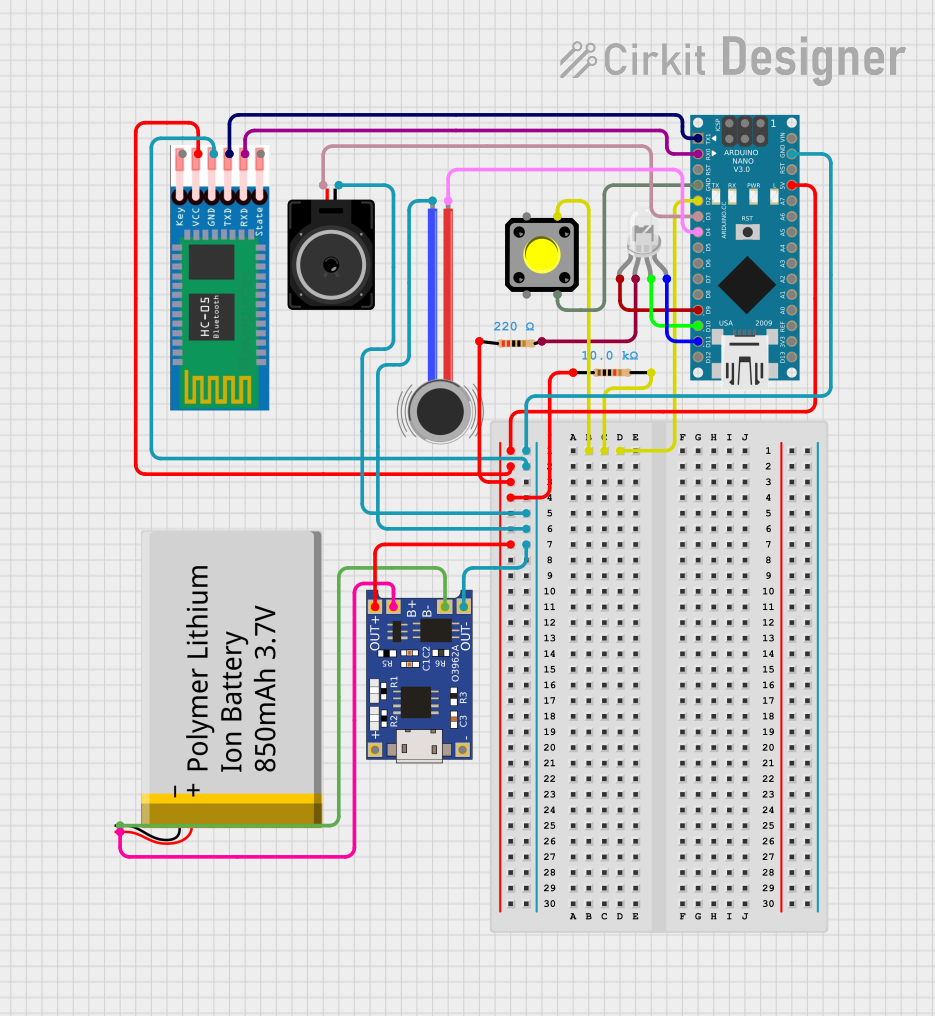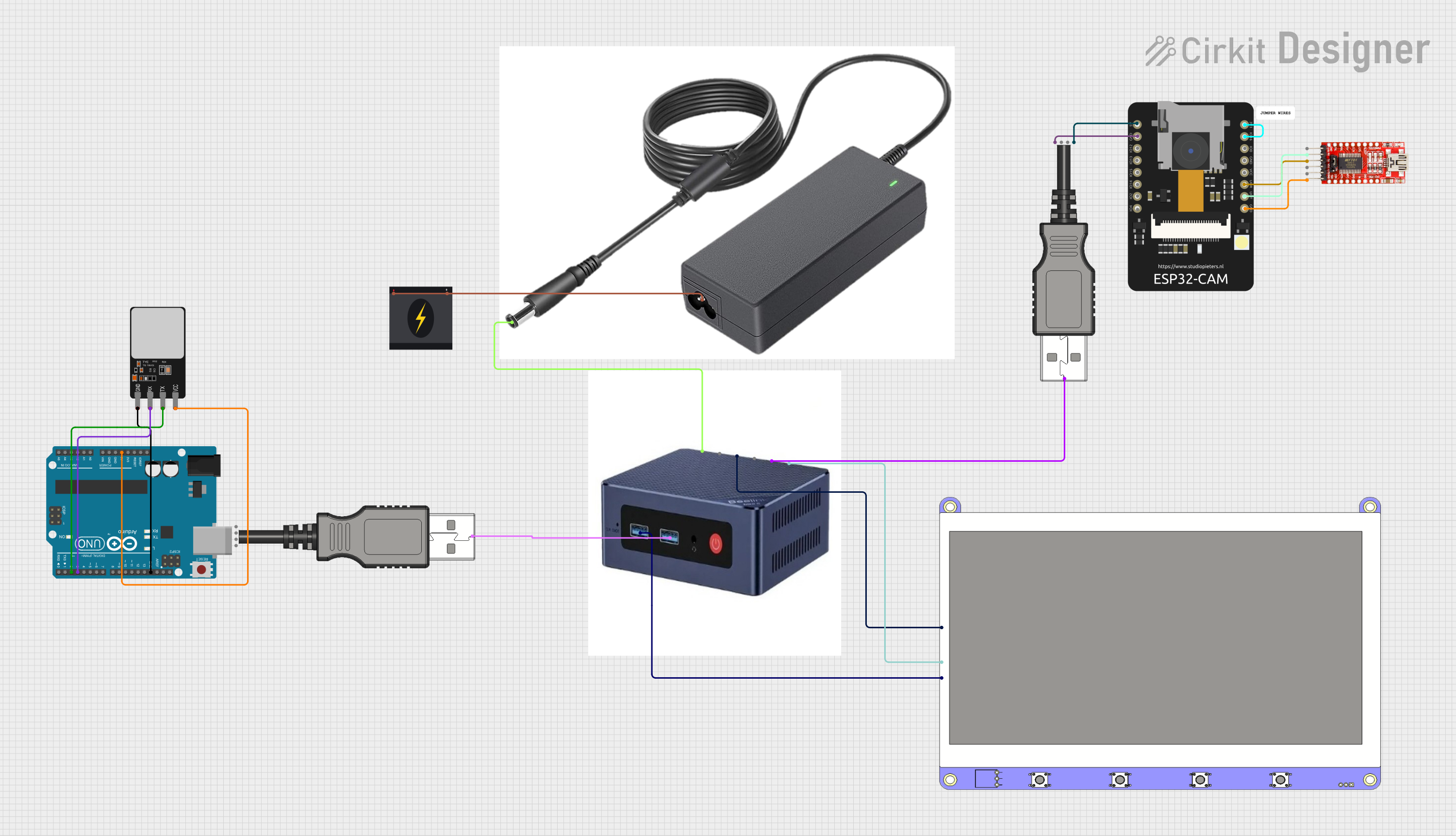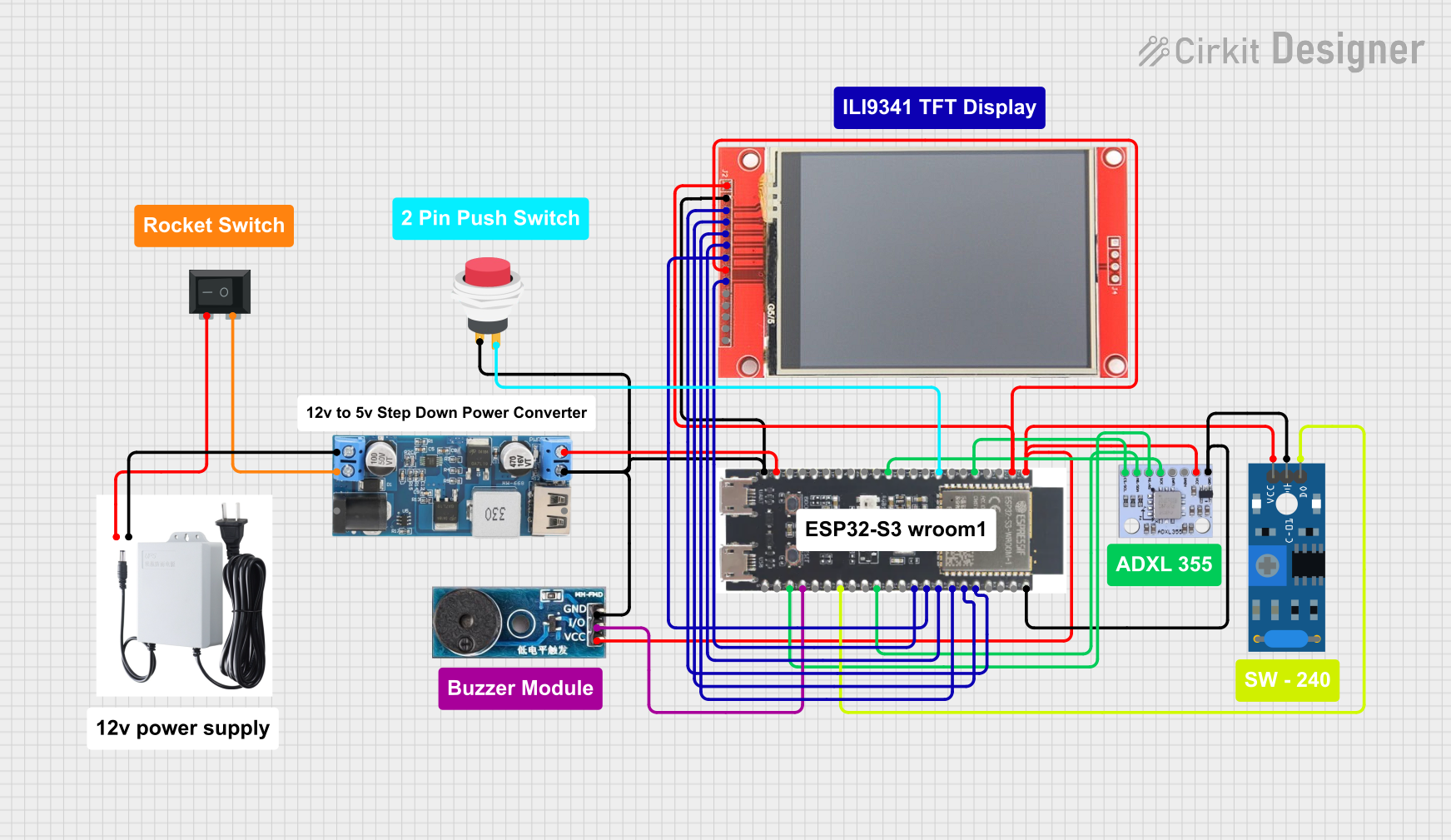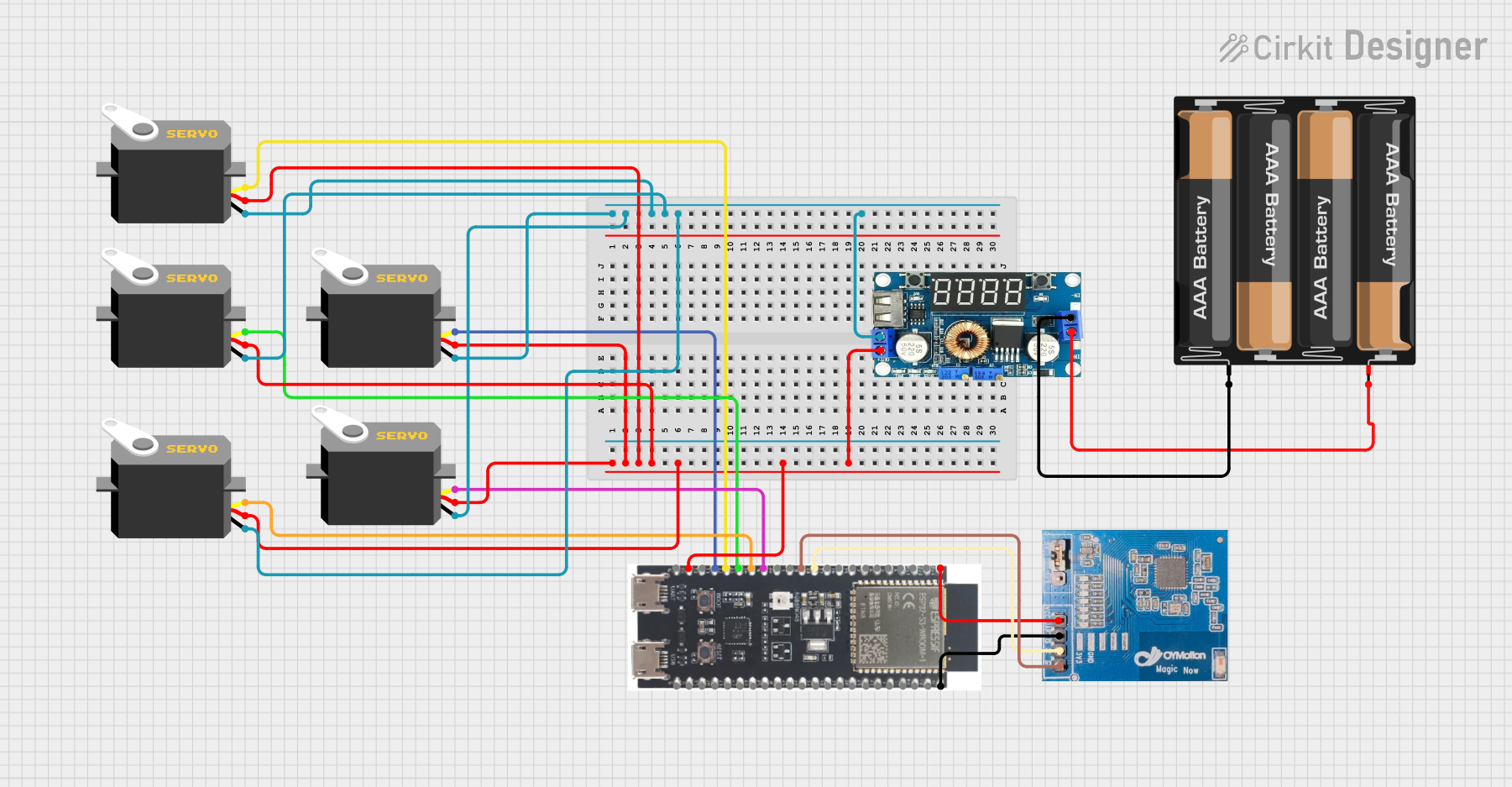
How to Use gt724v4 pequeno: Examples, Pinouts, and Specs

 Design with gt724v4 pequeno in Cirkit Designer
Design with gt724v4 pequeno in Cirkit DesignerIntroduction
The GT724V4 Pequeno is a compact and efficient GSM/GPRS module designed for communication applications. Manufactured by GT724V4, this module enables devices to connect to mobile networks for data transmission and SMS functionalities. Its small form factor and low power consumption make it an excellent choice for IoT projects, remote monitoring, and M2M (Machine-to-Machine) communication.
Explore Projects Built with gt724v4 pequeno

 Open Project in Cirkit Designer
Open Project in Cirkit Designer
 Open Project in Cirkit Designer
Open Project in Cirkit Designer
 Open Project in Cirkit Designer
Open Project in Cirkit Designer
 Open Project in Cirkit Designer
Open Project in Cirkit DesignerExplore Projects Built with gt724v4 pequeno

 Open Project in Cirkit Designer
Open Project in Cirkit Designer
 Open Project in Cirkit Designer
Open Project in Cirkit Designer
 Open Project in Cirkit Designer
Open Project in Cirkit Designer
 Open Project in Cirkit Designer
Open Project in Cirkit DesignerCommon Applications
- Internet of Things (IoT) devices
- Remote monitoring and control systems
- SMS-based alert systems
- GPS tracking and fleet management
- Smart home automation
- Industrial automation and telemetry
Technical Specifications
Key Technical Details
| Parameter | Value |
|---|---|
| Manufacturer | GT724V4 |
| Part ID | GT724V4 Pequeno |
| Network Support | GSM/GPRS (2G) |
| Operating Voltage | 3.3V to 4.2V |
| Power Consumption | Idle: ~1.5mA, Active: ~200mA |
| Frequency Bands | Quad-band: 850/900/1800/1900 MHz |
| Data Transmission | GPRS Class 10 |
| SMS Support | Text and PDU modes |
| Operating Temperature | -40°C to +85°C |
| Dimensions | 25mm x 20mm x 3mm |
Pin Configuration and Descriptions
The GT724V4 Pequeno module has a total of 10 pins. Below is the pinout and description:
| Pin Number | Pin Name | Description |
|---|---|---|
| 1 | VCC | Power supply input (3.3V to 4.2V) |
| 2 | GND | Ground connection |
| 3 | TXD | UART Transmit (connect to RX of microcontroller) |
| 4 | RXD | UART Receive (connect to TX of microcontroller) |
| 5 | RST | Reset pin (active low) |
| 6 | NET_STATUS | Network status indicator (LED output) |
| 7 | SIM_VCC | SIM card power supply |
| 8 | SIM_DATA | SIM card data line |
| 9 | SIM_CLK | SIM card clock line |
| 10 | SIM_RST | SIM card reset line |
Usage Instructions
How to Use the GT724V4 Pequeno in a Circuit
- Power Supply: Connect the VCC pin to a regulated 3.3V-4.2V power source and the GND pin to ground.
- UART Communication: Connect the TXD and RXD pins to the corresponding RX and TX pins of your microcontroller (e.g., Arduino UNO).
- SIM Card: Insert a valid SIM card into the SIM card slot. Ensure the SIM card is activated and has sufficient balance for data/SMS usage.
- Antenna: Attach a compatible GSM antenna to the module for better signal reception.
- Network Status: Use the NET_STATUS pin to monitor the module's connection to the network. This pin can drive an LED to indicate status.
Important Considerations
- Ensure the power supply is stable and within the specified voltage range to avoid damage to the module.
- Use level shifters if interfacing with a 5V microcontroller, as the module operates at 3.3V logic levels.
- Place decoupling capacitors (e.g., 100µF and 0.1µF) near the power pins to reduce noise.
- Keep the antenna away from high-frequency components to minimize interference.
Example: Connecting to an Arduino UNO
Below is an example of how to connect the GT724V4 Pequeno to an Arduino UNO and send an SMS.
Wiring Diagram
| GT724V4 Pequeno Pin | Arduino UNO Pin |
|---|---|
| VCC | 3.3V |
| GND | GND |
| TXD | Pin 10 (RX) |
| RXD | Pin 11 (TX) |
| RST | Pin 12 |
Arduino Code
#include <SoftwareSerial.h>
// Define software serial pins for GT724V4 Pequeno
SoftwareSerial gsm(10, 11); // RX = Pin 10, TX = Pin 11
void setup() {
// Initialize serial communication
Serial.begin(9600); // For debugging
gsm.begin(9600); // For GT724V4 communication
Serial.println("Initializing GT724V4 Pequeno...");
delay(1000);
// Send AT command to check module response
gsm.println("AT");
delay(1000);
while (gsm.available()) {
Serial.write(gsm.read()); // Print module response to Serial Monitor
}
// Send SMS command
gsm.println("AT+CMGF=1"); // Set SMS mode to text
delay(1000);
gsm.println("AT+CMGS=\"+1234567890\""); // Replace with recipient's phone number
delay(1000);
gsm.println("Hello from GT724V4 Pequeno!"); // SMS content
delay(1000);
gsm.write(26); // Send Ctrl+Z to send the SMS
Serial.println("SMS sent!");
}
void loop() {
// No actions in loop
}
Notes
- Replace
+1234567890with the recipient's phone number. - Ensure the SIM card has SMS capabilities and sufficient balance.
Troubleshooting and FAQs
Common Issues and Solutions
Module Not Responding to AT Commands
- Ensure the power supply is stable and within the specified range.
- Verify the UART connections (TXD and RXD) between the module and microcontroller.
- Check the baud rate settings in your code (default is 9600).
No Network Connection
- Confirm that the SIM card is properly inserted and activated.
- Check the antenna connection and ensure good signal strength.
- Verify that the module supports the frequency bands of your local network.
SMS Not Sending
- Ensure the SIM card has sufficient balance for SMS.
- Verify the recipient's phone number format (e.g., include country code).
Module Overheating
- Check for proper ventilation and avoid operating the module in high-temperature environments.
- Ensure the power supply is not exceeding the maximum voltage rating.
FAQs
Q: Can the GT724V4 Pequeno be used with a 5V microcontroller?
A: Yes, but you must use level shifters to convert the 5V logic levels to 3.3V.
Q: What is the maximum data rate supported by the module?
A: The module supports GPRS Class 10, with a maximum data rate of 85.6 kbps.
Q: Does the module support 3G or 4G networks?
A: No, the GT724V4 Pequeno is a GSM/GPRS (2G) module and does not support 3G or 4G networks.
Q: How can I check the signal strength?
A: Use the AT command AT+CSQ to query the signal strength. The module will return a value indicating the signal quality.
Q: Can I use this module for GPS tracking?
A: The GT724V4 Pequeno does not have built-in GPS functionality, but it can be paired with a GPS module for tracking applications.